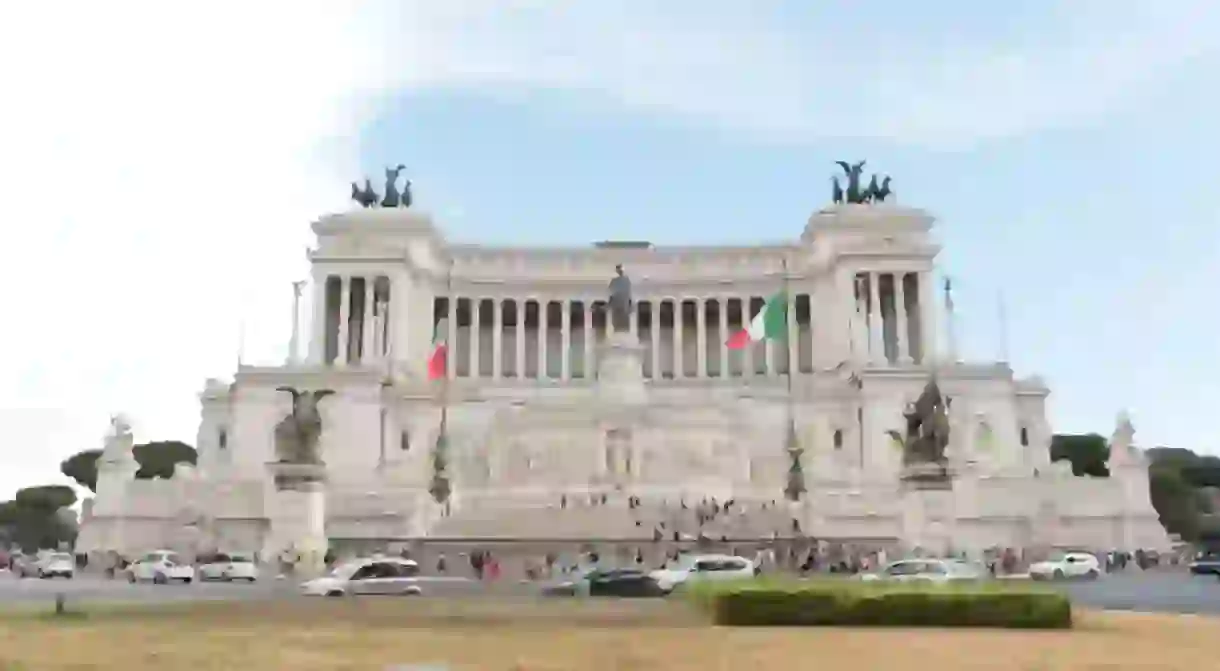A History of the Altare della Patria in 60 Seconds

The Altare della Patria is a striking and dominating marble edifice that dominates Piazza Venezia and is noticeable amidst the church domes and rooftops in Rome‘s skyline. The building name translates to “Altar of the Fatherland” and was built between 1885-1925 to honor Victor Emmanuel II, himself referred to as Father of the Fatherland and who served as the first king of a unified Italy.
Altare della Patria is a building with many names, including Monumento Nazionale a Vittorio Emanuele II (National Monument to Victor Emmanuel II) and Il Vittoriano, though it has accrued some less flattering monikers since it was first designed by Italian architect Giuseppe Sacconi in 1885. Standing a sweeping 70 m (230 ft) tall and 135 m (443 ft) wide, the neoclassical monument is made of marble and features elaborate staircases, columns, fountains and statues. It’s commonly called “The Wedding Cake” and “The Typewriter” by critics who protest its ostentatious design and its incongruity with the city’s architecture. In fact, much of the Capitoline Hill and its surrounding medieval neighborhood were destroyed to create space. The altar even obscures the Colosseum behind it, which some say appears to supplant it in importance.
However, when Sacconi designed it, he sought to represent Italy geographically and allegorically. He did this through a number of elaborate symbols, friezes and statues featured on the altar. The two fountains at either end of the monument represent the seas surrounding the Italian peninsula, the Adriatic Sea and the Tyrrhenian Sea. A cycle of friezes at the top of the monument depict the regions of Italy personified as statues, and a bronze statue of Vittorio Emanuele II on horseback is prominently displayed in the center on top of the Tomb of the Unknown Soldier with its eternal flame.
Il Vittoriano contains a museum dedicated to Italian unification, and visitors can climb to the rooftop for sweeping views of the city. Just behind the monument is a separate exhibition space, the Complesso del Vittoriano Ala Brasini, which hosts important art shows in its numerous halls.













